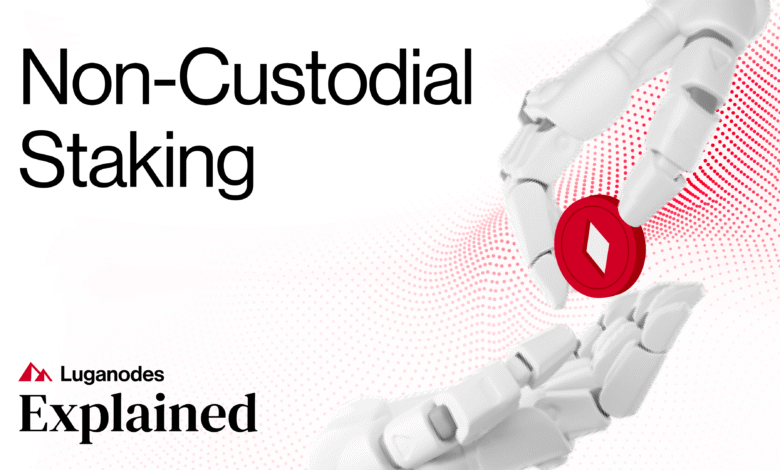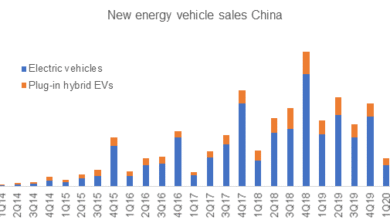Non-Custodial Staking: Everstake Challenges SEC Regulations

In the rapidly evolving landscape of blockchain technology, non-custodial staking has emerged as a pivotal element, providing users with a means to participate in proof-of-stake networks while retaining control of their assets. As the conversation around SEC regulations intensifies, companies like Everstake advocate strongly for the notion that non-custodial staking should not be classified as securities transactions. This innovative process allows individuals to engage in decentralized staking services without relinquishing their assets to third-party custodians. With over $193 billion currently staked across major networks, the importance of supporting this model cannot be overstated. As regulatory clarity grows, it will further empower the blockchain community to innovate responsibly and sustainably.
Non-custodial staking, sometimes referred to as self-custody staking, is reshaping how participants interact with blockchain networks while ensuring their assets remain secure. This approach enables users to stake their cryptocurrencies without the need for a centralized intermediary, promoting a decentralized ethos that is entrenched in blockchain innovation. As stakeholders like Everstake emphasize the necessity of regulatory clarity from the SEC regarding these services, the ongoing dialogue highlights the essential role that decentralized staking plays in the ecosystem. The challenge lies in striking a balance between compliance and fostering innovation in the rapidly expanding proof-of-stake sector. By addressing regulatory concerns, the industry can advance its foundational technologies while ensuring user autonomy is preserved.
The Importance of Non-Custodial Staking for Blockchain Innovation
Non-custodial staking plays a pivotal role in the ongoing innovation within blockchain technology. By allowing users to maintain control over their crypto assets while participating in staking, this model enhances security and trust among stakeholders. Unlike custodial models, where a third party manages assets, non-custodial staking empowers individuals to engage with proof-of-stake networks directly. This decentralized approach not only strengthens the core values of blockchain but also drives overall growth in the ecosystem.
As more players enter the blockchain space, the non-custodial staking model is positioned at the forefront of empowering users. It democratizes access and encourages more users to participate in staking activities without relinquishing control over their investments. Given the increasing popularity of proof-of-stake networks, the non-custodial model is integral to fostering wider adoption and ensuring the security of staked assets.
Everstake’s Stance on SEC Regulations and Staking Services
Everstake has taken a proactive approach in engaging with the U.S. Securities and Exchange Commission (SEC) regarding the future of non-custodial staking services. The company argues that these services should not be classified as securities transactions, as users retain ownership of their assets. This position not only safeguards the operational model of non-custodial staking but also emphasizes the need for clear and informed regulations that cater to the innovative nature of blockchain technology.
In their discussions, Everstake highlighted that strict regulation could stifle innovation in the blockchain sector. With over $193 billion currently staked in various proof-of-stake networks, the implications of misclassifying staking as securities would be significant. Everstake urges the SEC to acknowledge the unique differences between traditional investments and crypto staking, allowing for a regulatory framework that fosters growth while maintaining oversight.
Challenges Facing Non-Custodial Staking Amid Regulatory Scrutiny
The rising interest from regulatory bodies, such as the SEC, brings significant challenges to non-custodial staking. As the regulatory environment evolves, the future of decentralized technologies might hinge on how effectively companies like Everstake can communicate the benefits and mechanics of their services. There is a pressing need for regulators to understand that non-custodial staking fundamentally operates on principles that differ from traditional securities.
Moreover, the fear of over-regulation looms large over the blockchain industry. If non-custodial staking were to be categorized under stringent securities laws, it could lead to a decrease in participation and innovation within proof-of-stake networks. This scenario could ultimately harm the decentralized nature of blockchain, which relies on widespread user participation and trust. Thus, effective dialogue between Everstake and the SEC is crucial to navigate these uncharted waters.
The Role of Collaboration Between Blockchain Innovators and Regulators
Everstake emphasizes the importance of collaboration between blockchain innovators and regulators like the SEC to achieve a balanced approach to oversight. By working together, they can develop a regulatory framework that encourages innovation while protecting investors. Such collaboration is essential, especially as blockchain technology continues to evolve rapidly within the financial landscape.
Through open dialogue, regulators can gain insights into the unique functionalities of non-custodial staking, understanding how it operates within proof-of-stake networks. This knowledge can aid in crafting regulations that do not stifle innovation but rather promote a resilient ecosystem conducive to growth and participation. Everstake is committed to sharing its infrastructure and expertise to foster this collaboration.
Understanding the Howey Test in the Context of Non-Custodial Staking
The Howey Test is a crucial criterion used to determine whether certain transactions should be classified as securities. Everstake’s engagement with the SEC highlighted how non-custodial staking does not satisfy key components of this test. Since users maintain control of their assets, the nature of staking diverges significantly from traditional asset transfers involved in securities transactions.
By clearly explaining how non-custodial staking aligns with regulatory requirements, Everstake aims to demystify the mechanics of this innovative approach. Understanding these nuances is vital for regulators and industry players alike, as it can set a precedent for how similar technologies are treated under U.S. law. Establishing this distinction is paramount for the future growth and innovation within the blockchain sector.
The Economic Implications of Staking Regulations
The economic ramifications of regulating non-custodial staking could extend well beyond individual users to affect the entire blockchain ecosystem. Should the SEC impose stringent regulations on staking services, it could deter investors and reduce the overall capital flowing into proof-of-stake networks. This decline could limit the resources available for development, innovation, and expansion, stunting the growth of this transformative technology.
Moreover, restrictions on staking may encourage users to seek out unregulated avenues, potentially exposing them to greater risks. Thus, ensuring a balanced regulatory framework is essential for sustaining economic momentum in the blockchain space. Everstake’s continuous dialogue with regulators aims to delineate these economic considerations to foster an environment where innovation can thrive without compromising security.
Future Directions for Non-Custodial Staking and Regulatory Landscape
The future of non-custodial staking hangs in the balance as discussions with the SEC unfold. Everstake believes that as the understanding of blockchain technology matures, so too will the regulatory frameworks that govern it. A favorable outcome could pave the way for clearer guidelines that resonate with the decentralized ethos of blockchain and enable the growth of staking services.
Looking ahead, industry stakeholders must remain vigilant and proactive in advocating for regulations that align with the principles of blockchain innovation. Continued engagement with regulatory bodies, public education on staking mechanics, and collaborative efforts will be critical in shaping a favorable landscape for non-custodial staking. These future directions can ensure that innovation continues to blossom within the blockchain sector.
Enhancing Public Understanding of Non-Custodial Staking
Everstake is committed to increasing public understanding of non-custodial staking and its role in the broader cryptocurrency ecosystem. By providing transparent information and resources, they aim to demystify the processes involved in staking and showcase its benefits. Educating potential users about the safety and autonomy provided by the non-custodial model can encourage wider adoption.
In addition, raising awareness about the regulatory challenges facing non-custodial staking can help build a united front among stakeholders. Engaging in community discussions and outreach efforts is essential to gather support for a balanced regulatory approach that recognizes the unique characteristics of blockchain technology. Everstake’s initiatives in this area could lead to a more informed public and favorable regulatory developments.
The Integral Relationship Between Staking and Decentralized Finance (DeFi)
Staking is intricately linked to the broader growth of decentralized finance (DeFi), providing a robust framework for users to earn rewards while contributing to network security. Non-custodial staking exemplifies this relationship by allowing participants to maximize their returns without compromising control over their assets. This model aligns with DeFi principles promoting autonomy and risk management.
Moreover, as DeFi ecosystems continue to expand, enhancing the adoption of staking could facilitate greater liquidity and efficiency within these platforms. Everstake underscores that recognizing the close ties between staking and DeFi will help build a more resilient financial landscape that embraces innovation while adhering to necessary regulations. This synergy is crucial for fostering comprehensive growth in both sectors.
Frequently Asked Questions
What is non-custodial staking and why is it important in blockchain innovation?
Non-custodial staking allows users to participate in staking on proof-of-stake networks while maintaining control over their crypto assets. This model is crucial for blockchain innovation as it enhances security and decentralization, ensuring users’ funds remain in their possession without relying on third parties.
How does Everstake define non-custodial staking in relation to SEC regulations?
Everstake argues that non-custodial staking should not be regulated as a security by the SEC since it does not involve asset transfer or profit-sharing schemes. This distinction is vital for protecting the integrity of staking services and fostering blockchain innovation.
Why is the SEC’s stance on non-custodial staking significant for staking services?
The SEC’s stance on non-custodial staking is significant because regulatory clarity can influence how staking services operate within the U.S. If deemed securities, it could impose additional compliance requirements that may stifle innovation within the rapidly growing proof-of-stake ecosystem.
What are the potential implications of regulating non-custodial staking as a security?
Regulating non-custodial staking as a security could lead to increased regulatory burdens for staking providers, potentially limiting user participation and hindering the growth of proof-of-stake networks. This could undermine the decentralized nature of blockchain technology.
How does non-custodial staking contribute to the security and decentralization of proof-of-stake networks?
Non-custodial staking contributes to the security and decentralization of proof-of-stake networks by allowing users to retain ownership of their assets, thus reducing the risks associated with centralized control. This promotes a more resilient and distributed network infrastructure.
What challenges does Everstake face in promoting non-custodial staking to regulators?
Everstake faces challenges in promoting non-custodial staking to regulators due to the complex nature of existing securities laws and the lack of clear definitions regarding what constitutes staking versus a security. Engaging with the SEC is crucial for establishing a clearer regulatory framework.
Where can I learn more about non-custodial staking and its benefits?
To learn more about non-custodial staking and its benefits, visit Everstake’s official website or explore educational resources that discuss the mechanics of staking, blockchain innovation, and the role of proof-of-stake networks in the cryptocurrency ecosystem.
| Key Point | Details |
|---|---|
| Everstake’s Position | Everstake argues that non-custodial staking should not be classified as securities. |
| Meeting with SEC | Everstake met with the SEC’s Crypto Task Force to discuss regulatory clarity. |
| Importance of Staking | Over $193 billion is currently staked in proof-of-stake networks, indicating its crucial role in decentralization. |
| Definition of Non-Custodial Staking | It does not involve asset transfer or profit-sharing schemes that would classify it as a security. |
| Quote from Sergii Vasylchuk | “Collaboration between blockchain innovators and regulators is essential for building a trustworthy and resilient industry.” |
Summary
Non-custodial staking should not be regulated as securities, according to Everstake’s recent discussions with the SEC. This type of staking, where users maintain control of their crypto assets, plays a vital role in the blockchain ecosystem. As the industry evolves amidst regulatory pressures, clarifying the status of non-custodial staking is essential for protecting innovation and ensuring that the vast amounts of capital staked across networks can continue to support decentralization. By working together, both innovators and regulators can establish a framework that nurtures this crucial aspect of blockchain technology.




